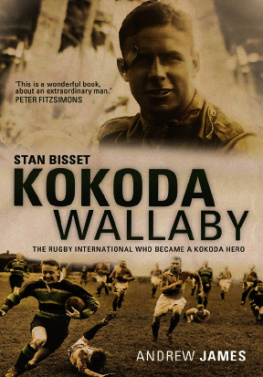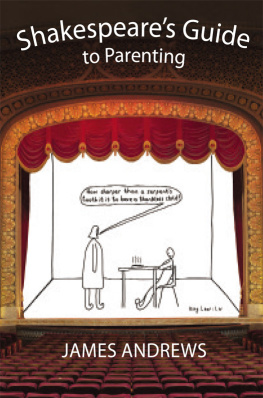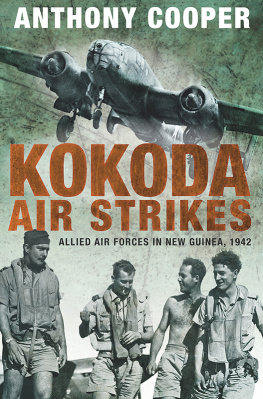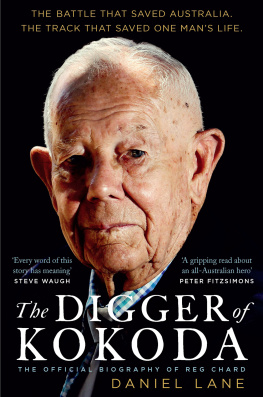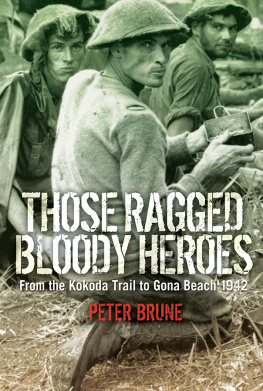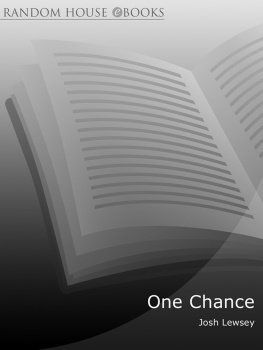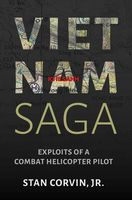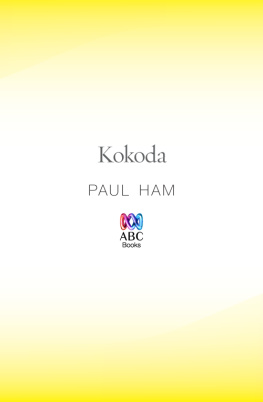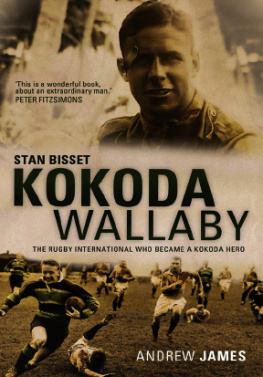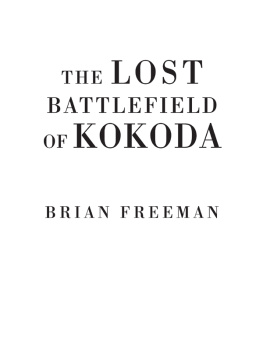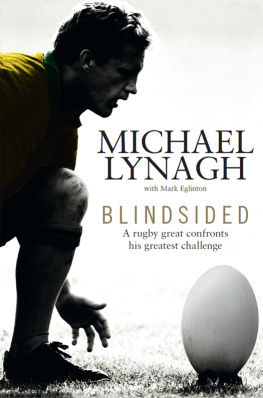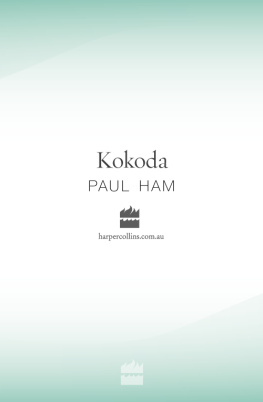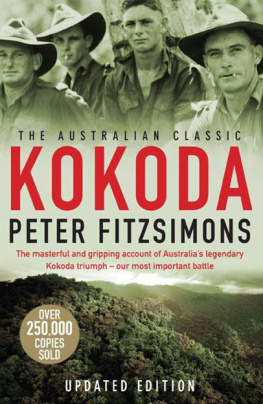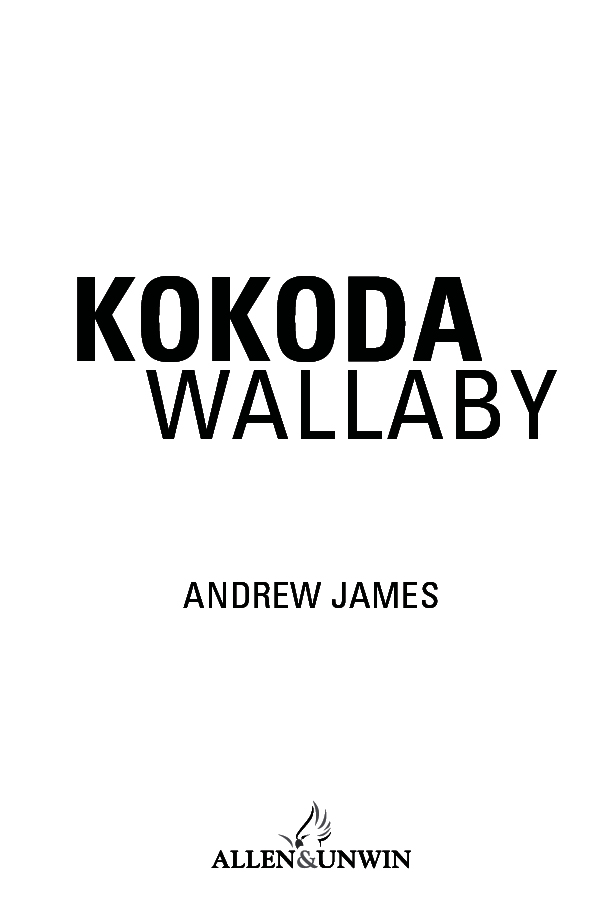First published in 2011
Copyright Andrew James 2011
All rights reserved. No part of this book may be reproduced or transmitted in any form or by any means, electronic or mechanical, including photocopying, recording or by any information storage and retrieval system, without prior permission in writing from the publisher. The Australian Copyright Act 1968 (the Act) allows a maximum of one chapter or 10 per cent of this book, whichever is the greater, to be photocopied by any educational institution for its educational purposes provided that the educational institution (or body that administers it) has given a remuneration notice to Copyright Agency Limited (CAL) under the Act.
Allen & Unwin
Sydney, Melbourne, Auckland, London
83 Alexander Street
Crows Nest NSW 2065
Australia
Phone: (61 2) 8425 0100
Fax: (61 2) 9906 2218
Email: info@allenandunwin.com
Web: www.allenandunwin.com
Cataloguing-in-Publication details are available from the National Library of Australia www.trove.nla.gov.au
ISBN 978 1 74237 696 7
Internal design by DiZign, Sydney
Maps by DiZign, Sydney
Index by Puddingburn
Photo credits: ARU Archives pp. 84, 87, 89, 92, 93; Australian War Memorial pp. 259, 261; The Daily Telegraph p. 59; Craig Eyes, Power House pp. 36, 45; Mitchell Library pp. 69, 74, 76, 78, 80, 83. All other photos have been supplied by the Bisset family.
Set in 11.5/15 pt Bembo by Post Pre-press Group, Australia
eBook production by Midland Typesetters, Australia
Contents
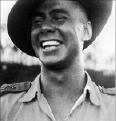
Dedication
To Lieutenant Mick Fussell, 4RAR (Commando) and Private Greg Sher, 2 Commando Company.
When you go home,
Tell them of us and say,
For their tomorrow,
We gave our today.
F irstly I would like to thank Stan and Gloria Bisset for the tireless help and overwhelming kindness they extended to me throughout my research for this project. The vast majority of this work comes from Stans own recollections, as told to me through many hours of conversation in the living-room of their home in Peregian Springs on the Sunshine Coast. Without Stans patience and willingness to assist me wherever possible, and without Glorias kindness and wonderful hospitality, this book would never have come to fruition.
Secondly, and almost as importantly, I need to thank my father Bill. During my time overseas with the Army, Dad launched himself tirelessly into the editing of this work as well as contributing an enormous amount of his own research (as a pre-eminent expert on the 2/14th Battalion and the Kokoda Campaign, an assertion I feel confident no one would challenge) and managed to turn the text from a draft into a coherent narrative.
Additionally, I need to thank my mother Liz for her meticulous proof-reading of the final drafts, my partner Bec for her continual creative advice and support, and Peter, Diana and Sonia from DiZign for their many hours of work on the design and layout.
Foreword
By Patrick Lindsay
I ll never forget watching Stan Bisset as he stood in front of his beloved brothers grave at Bomana War Cemetery outside Port Moresby. It was August 1998, during what Stan and his fellow Kokoda Diggers called the Last Parade their pilgrimage to say a final farewell to the mates they had left behind. It was the first time Stan had visited the grave since Butch had died in his arms on the Track fifty-six years earlier. He stood there silently for a long time. I could see the emotions surging through him. As always, he stood ramrod straight, but tears welled in his eyes as the memories flooded back.
There before him lay Butch, whose life was cut short by the terrible random selection of war, like that of so many others on the Track. Stan had vowed to lead a good and productive life to honour Butchs sacrifice. And he was as good as his word. He raised a fine family, forged a long and successful career and has done all in his power to keep Butchs memory and the story of Kokoda alive.
While I watched, Stan gently wiped the tears from his eyes with his powerful hands and then brought them to his side. He squared his shoulders and paused. Then he swept his right arm up in a crisp, practised salute: a homage from a warrior; a farewell from a brother.
Stan had a deep-rooted sense of duty and an unshakeable sense of honour. He had star quality: that indefinable amalgam of physical presence and character that sets the remarkable ones apart. He was a genuine sporting hero who blossomed into a military hero in the cauldron of war.
I vividly remember the first time I met him we were interviewing veterans for a documentary we were filming. My immediate thought was that theyve ordered a hero from Central Casting and theyve sent the perfect specimen.
Stans former commanding officer and lifelong friend, the late Phil Rhoden, told me that Stan had no time to grieve for Butch during the battles along the Track and it took him many years to recover from the loss. Like so many other Kokoda veterans, the campaign was one of the defining experiences of Stans life. Somehow, Stan dealt with the blows and got on with his life.
Stan Bisset was quite simply one the finest men I have met. I have been privileged to call him a friend and a mentor for twenty years. He personified so many attributes of the Digger to me courage (both moral and physical), compassion, selflessness, independence, loyalty, resourcefulness, devotion, coolness, and humour. He carried himself with the bearing of a natural leader and a champion sportsman. Even as he neared his century, he continued to inspire me and all those who knew him with his dogged refusal to surrender any ground to Father Time.
Stan Bisset, like this wonderful story of his life, was timeless.
Patrick Lindsay is the author of fourteen books including The Spirit of Kokoda , The Essence of Kokoda and The Spirit of the Digger.
Preface
S o, why Stans story? For any work of this kind it is probably worth beginning with that most basic of questions. Researching and writing a biography is a tough undertaking and the modern reader is not starved for choice in this genre, so what is it about this mans life that makes it a story worth telling?
On one level, the answer is relatively obvious. Stan Bisset might already be a familiar name for a considerable number of readers. Many Australian rugby supporters will recognise him as a member of our 1939 touring team and something of a living legend within the Australian Rugby Union fraternity. Other readers who have an interest in, or who have walked, the Kokoda Track in Papua New Guinea could recognise him as one of the most distinguished Australian officers of several key battles of the war in New Guinea including the horrific battles of Gona and the Ramu Valley. Stan was awarded the Military Cross for leadership and courage under fire at the latter.
These achievements and experiences alone make Stans story one worth telling, but the narrative of this one mans life also has a broader significance. In a way, Stans story typifies that of an entire generation of Australians born at the time of the Great War, children of the Great Depression, young adults during the horrific years of the Second World War, middle-aged parents through the socially disruptive decades of the 1950s and 60s, and finally, the elderly in the rapidly changing world of the information age. It is almost inconceivable that one generation could bear witness to so much change and endure such challenges. Stans story encapsulates all this, and more.

